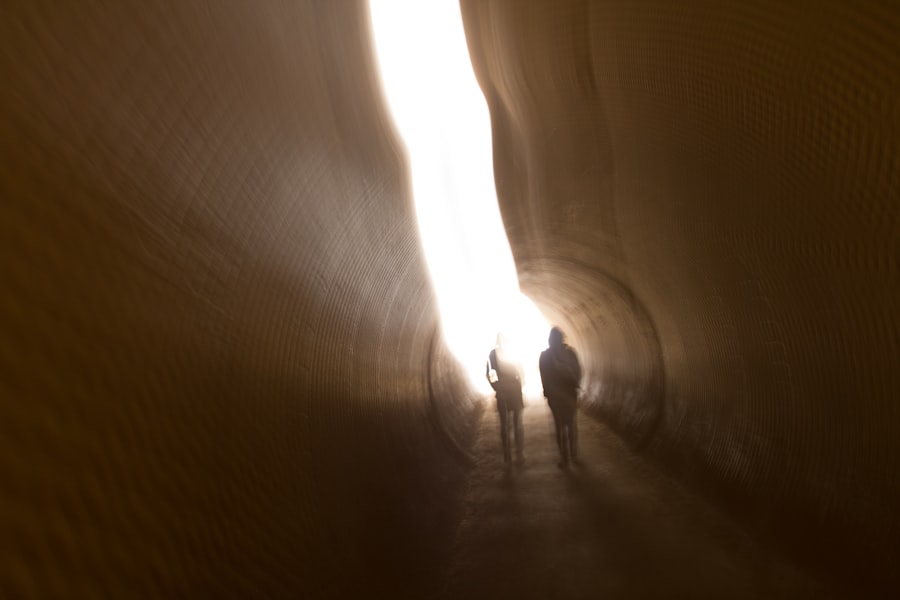The Drake Passage, a body of water that separates South America from Antarctica, is renowned for its tumultuous seas and unpredictable weather. Named after the English explorer Sir Francis Drake, who navigated these waters in the late 16th century, the passage has become a focal point for maritime exploration and scientific research. Stretching approximately 600 miles, it serves as a critical conduit for vessels traveling between the Atlantic and Pacific Oceans.
The passage is not only significant for its geographical location but also for its role in global ocean currents and climate patterns. For centuries, the Drake Passage has captured the imagination of adventurers and scientists alike. Its reputation as one of the most challenging maritime routes has led to countless tales of bravery and resilience.
The waters are often described as the roughest in the world, with waves that can reach heights of over 30 feet. Despite these challenges, the Drake Passage remains a vital route for those seeking to explore the Antarctic region, making it an essential part of maritime history and contemporary exploration.
Key Takeaways
- The Drake Passage is a body of water between South America’s Cape Horn and the South Shetland Islands of Antarctica, known for its challenging sailing conditions.
- The geography of the Drake Passage is characterized by strong winds, large waves, and unpredictable weather, making it one of the most treacherous waterways in the world.
- The Drake Passage has a rich historical significance as a route for early explorers and a key location for scientific research in Antarctica.
- Navigating the Drake Passage poses numerous challenges and dangers, including extreme weather, icebergs, and rough seas, making it a test for even the most experienced sailors.
- Strategies for safe passage through the Drake Passage include careful route planning, experienced crew, and modern navigation technology to mitigate the risks of the journey.
The Geography and Climate of the Drake Passage
Geographically, the Drake Passage is characterized by its unique position between Cape Horn at the southern tip of South America and the Antarctic Peninsula. This narrow stretch of water is not only a significant maritime route but also plays a crucial role in the Southern Ocean’s circulation patterns. The passage is relatively shallow compared to other oceanic regions, with depths averaging around 11,000 feet.
This topography contributes to the turbulent waters that define the area, as strong currents and winds collide in this confined space. The climate of the Drake Passage is equally notorious, marked by rapid changes and extreme conditions. The region experiences fierce winds, often exceeding 50 knots, and sudden storms that can arise without warning.
The temperature can fluctuate dramatically, with icy waters that can chill to near freezing. These climatic conditions create a challenging environment for navigation and have earned the passage its reputation as a formidable barrier for seafarers. Understanding the geography and climate of the Drake Passage is essential for anyone attempting to traverse its waters.
Historical Significance of the Drake Passage

The historical significance of the Drake Passage cannot be overstated. It has been a critical route for explorers since the Age of Discovery, serving as a gateway to Antarctica and beyond. Sir Francis Drake’s voyage in 1578 marked one of the first recorded passages through these treacherous waters, paving the way for future explorers.
His journey not only demonstrated the potential for maritime navigation in this region but also highlighted the importance of the passage in connecting different parts of the world. Throughout history, many notable expeditions have traversed the Drake Passage, each contributing to humanity’s understanding of geography and oceanography. The passage has been a site of exploration for scientists studying climate change, marine biology, and glaciology.
Its waters have witnessed significant events, including whaling and sealing operations in the 19th century, which have left lasting impacts on marine ecosystems. The historical narrative of the Drake Passage is rich and varied, reflecting humanity’s enduring quest for knowledge and adventure.
Challenges and Dangers of Navigating the Drake Passage
| Challenges and Dangers | Drake Passage |
|---|---|
| Strong Winds | Experiencing winds up to 70 mph |
| Rough Seas | Encountering waves up to 15 meters high |
| Icebergs | Potential risk of encountering icebergs |
| Narrow Passage | Constricted route between South America and Antarctica |
| Isolation | Lack of nearby assistance in case of emergency |
Navigating the Drake Passage presents numerous challenges and dangers that have tested even the most experienced mariners. The unpredictable weather patterns can lead to sudden storms, creating hazardous conditions that can jeopardize vessels and their crews. The convergence of powerful ocean currents, such as the Antarctic Circumpolar Current, further complicates navigation, often resulting in turbulent seas that can be difficult to predict or manage.
In addition to natural obstacles, the passage is also fraught with risks associated with icebergs and floating debris. The presence of icebergs poses a significant threat to ships, particularly during certain times of the year when they are more prevalent. Mariners must remain vigilant and employ advanced navigation techniques to avoid collisions.
These challenges underscore the need for thorough preparation and respect for the formidable nature of the Drake Passage.
Strategies for Safe Passage through the Drake Passage
To ensure safe passage through the Drake Passage, mariners must adopt a range of strategies that account for its unique challenges. One crucial approach involves meticulous planning and preparation before embarking on a journey through these waters. This includes studying weather patterns, understanding ocean currents, and being aware of potential hazards such as icebergs.
Utilizing advanced weather forecasting tools can provide valuable insights into upcoming conditions, allowing crews to make informed decisions about their routes. Another essential strategy is maintaining a well-equipped vessel capable of handling rough seas. This includes ensuring that safety equipment is readily available and that crew members are trained in emergency procedures.
Regular drills can help prepare everyone on board for unexpected situations. Additionally, employing experienced navigators who are familiar with the intricacies of the Drake Passage can significantly enhance safety during transit.
Wildlife and Natural Wonders of the Drake Passage

The Drake Passage is not only known for its challenging navigation but also for its rich biodiversity and stunning natural wonders. The waters are teeming with marine life, including various species of whales, seals, and seabirds that thrive in this unique ecosystem. The passage serves as a critical feeding ground for many migratory species, making it an important area for marine conservation efforts.
Among the remarkable wildlife found in these waters are humpback whales, orcas, and blue whales, which can often be spotted during their migratory journeys. Additionally, seabirds such as albatrosses and petrels soar above the waves, taking advantage of the strong winds that characterize the region. The natural beauty of the Drake Passage is further enhanced by its dramatic landscapes, including towering icebergs and rugged coastlines that captivate all who venture into its depths.
Modern Navigation Technology and the Drake Passage
In recent years, advancements in navigation technology have significantly improved safety and efficiency for vessels traversing the Drake Passage. Modern ships are equipped with sophisticated GPS systems that provide real-time positioning data, allowing navigators to chart their courses with greater accuracy. These technologies enable mariners to monitor weather conditions continuously and adjust their routes accordingly.
Moreover, radar systems play a crucial role in detecting obstacles such as icebergs or other vessels in proximity. Enhanced communication systems ensure that crews remain connected with shore-based support teams who can provide valuable information about changing conditions in real-time. As technology continues to evolve, it holds great promise for making navigation through the Drake Passage safer and more reliable than ever before.
Famous Expeditions and Discoveries in the Drake Passage
The Drake Passage has been a backdrop for numerous famous expeditions that have shaped our understanding of exploration and science. One notable expedition was led by Ernest Shackleton in 1914 when he attempted to cross Antarctica via the Weddell Sea but became trapped in pack ice in this very passage. His remarkable story of survival against all odds has become legendary, highlighting both the dangers of navigating these waters and the indomitable spirit of human exploration.
Another significant expedition was conducted by oceanographer Jacques Cousteau in the 1970s, who explored marine life in these frigid waters. His work brought attention to the ecological importance of the region and underscored the need for conservation efforts to protect its unique biodiversity. These expeditions not only contributed to scientific knowledge but also inspired future generations to appreciate and explore the wonders of the Drake Passage.
Tips for Travelers Crossing the Drake Passage
For travelers planning to cross the Drake Passage, preparation is key to ensuring a safe and enjoyable journey. First and foremost, it is essential to choose a reputable tour operator with experience navigating these waters. Travelers should inquire about safety measures in place and ensure that their vessel is equipped with modern navigation technology.
Packing appropriately is also crucial; layers of clothing are recommended due to rapidly changing temperatures. Seasickness can be a common issue in these turbulent waters, so travelers may want to bring motion sickness medication or remedies to alleviate discomfort during transit. Lastly, maintaining an open mind and a sense of adventure will enhance the experience as travelers witness breathtaking landscapes and diverse wildlife along their journey.
Environmental Concerns and Conservation Efforts in the Drake Passage
As awareness grows regarding environmental issues facing our planet, concerns about conservation in the Drake Passage have come to the forefront. The region’s delicate ecosystem is threatened by climate change, overfishing, and pollution from maritime activities. Rising ocean temperatures are impacting marine life patterns, while increased shipping traffic raises concerns about oil spills and other environmental hazards.
In response to these challenges, various organizations are working tirelessly to promote conservation efforts in the region. Initiatives aimed at protecting marine biodiversity include establishing marine protected areas (MPAs) that restrict certain activities to safeguard vulnerable species. Collaborative efforts among governments, scientists, and conservationists are essential to ensure that future generations can continue to appreciate the natural wonders of the Drake Passage.
The Future of Navigating the Drake Passage
Looking ahead, navigating the Drake Passage will likely continue to evolve as technology advances and environmental challenges persist. Innovations in navigation systems will enhance safety measures while improving efficiency for vessels traversing these waters. Additionally, ongoing research into climate change will provide valuable insights into how shifting environmental conditions may impact navigation routes and marine ecosystems.
As interest in Antarctic exploration grows among tourists and researchers alike, it will be crucial to balance economic opportunities with environmental stewardship. Sustainable tourism practices will play an essential role in preserving this unique region while allowing people to experience its beauty firsthand. The future of navigating the Drake Passage holds promise as long as there is a commitment to protecting its natural wonders for generations to come.
The Drake Passage is a significant body of water that serves as a natural boundary between the Atlantic and Pacific Oceans, and it is renowned for its challenging navigation conditions due to strong currents and unpredictable weather. For those interested in exploring more about the geographical and historical significance of the Drake Passage, a related article can be found on MyGeoQuest. This article delves into the intricacies of the passage and its impact on maritime travel. You can read more about it by visiting mygeoquest.
com/sample-page/’>this page on MyGeoQuest.
WATCH NOW! Drake Passage: Earth’s Deadliest Waters Revealed
FAQs
What is the Drake Passage?
The Drake Passage is a body of water located between the southern tip of South America (Cape Horn) and the South Shetland Islands of Antarctica. It connects the Atlantic Ocean to the Pacific Ocean.
Why is the Drake Passage significant?
The Drake Passage is known for its rough seas and strong winds, making it one of the most challenging and unpredictable waterways to navigate. It is also a major gateway for the movement of ocean currents and marine life between the Atlantic and Pacific Oceans.
What is the weather like in the Drake Passage?
The weather in the Drake Passage is characterized by strong winds, high waves, and rapidly changing conditions. It is notorious for its stormy and unpredictable weather, with frequent low-pressure systems and rough seas.
What wildlife can be found in the Drake Passage?
The Drake Passage is home to a diverse range of marine life, including whales, seals, penguins, and various seabird species. It is also a popular area for birdwatching and wildlife observation.
How is the Drake Passage important for scientific research?
The unique oceanographic and atmospheric conditions in the Drake Passage make it an important area for scientific research. It is a key location for studying ocean currents, climate patterns, and marine ecosystems, as well as for conducting research on Antarctic ice and wildlife.
